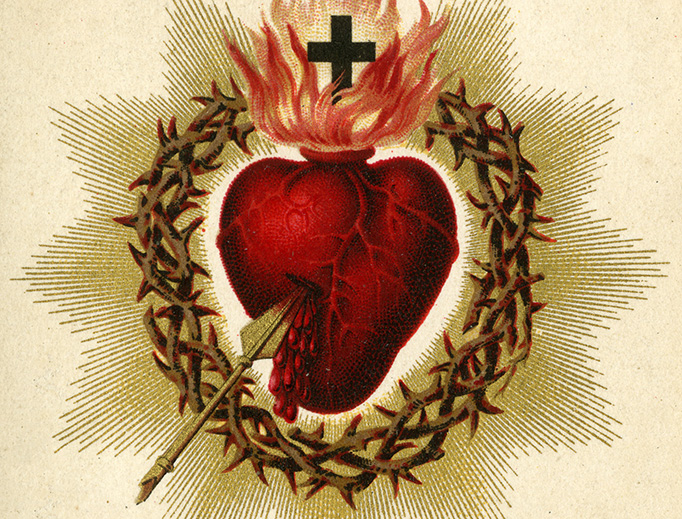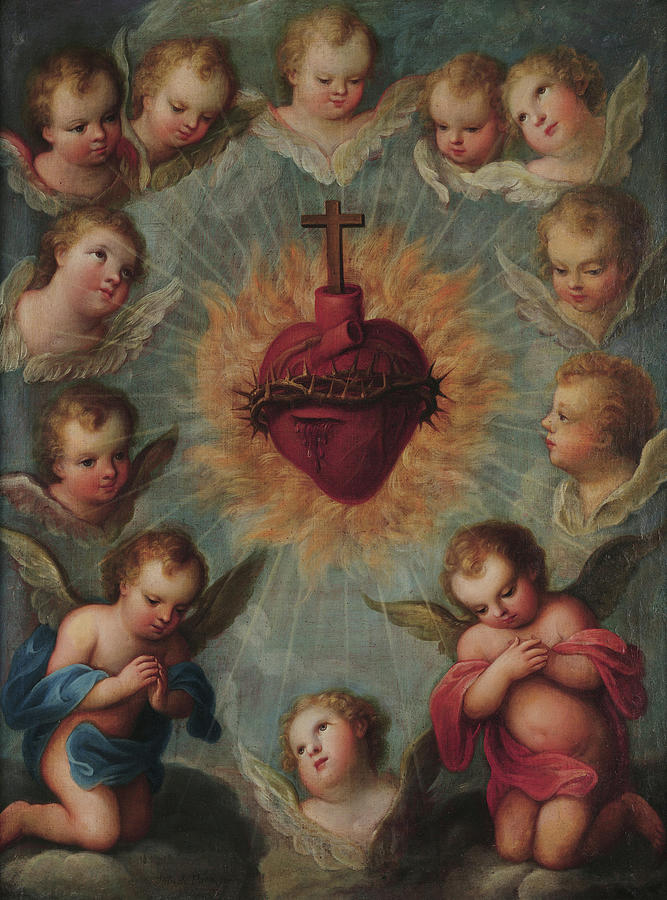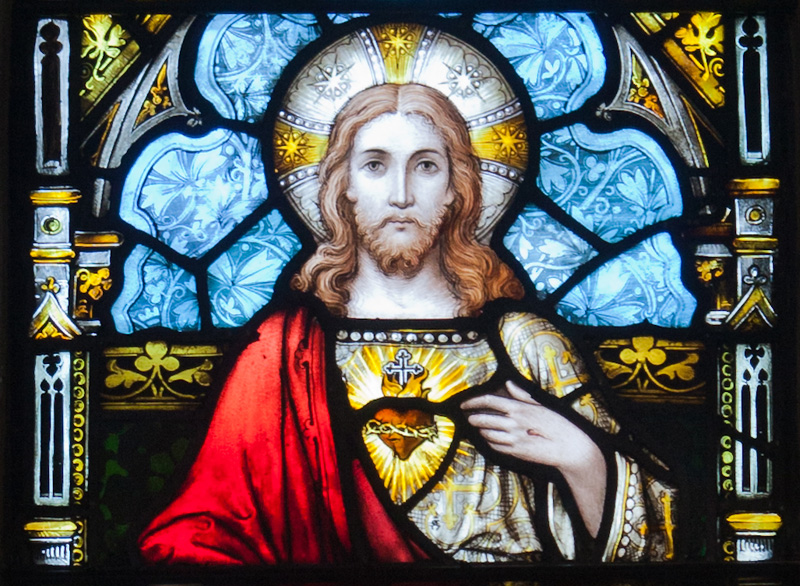“Who can overcome the world? Only the man who believes that Jesus is the Son of God: Jesus Christ who came by water and blood, not with water only, but with water and blood; with the Spirit as another witness – since the Spirit is the truth – so that there are three witnesses, the Spirit, the water and the blood, and all three of them agree”
(1 John 5:5-8).
In Jewish thought, any charge brought against another needed to be supported by two or more witnesses. From the Book of Deuteronomy we read: “A single witness shall not prevail against a man; only on the evidence of two witnesses, or of three witnesses, shall a charge be sustained” (Deut 19:15). Now, while no charge is being laid, Saint John makes a bold statement about Jesus’ identity: that He is the Son of God. And to defend this statement he calls his witnesses: the water, the blood, with the Spirit as another witness – since the Spirit is the truth.
The witness of blood and water resonate with the witness from the foot of the cross. The evangelist relates that, after breaking the legs of the two who were crucified with him, coming upon Jesus the soldiers saw that he was already dead, and so they pierced His side with a lance instead. “And at once there came out blood and water” (John 19:34). Saint John is then at pains to add that “he who saw it has borne witness – his testimony is true, and he knows that he tells the truth – that you also may believe” (John 19:35). Trusting is this testimony, we look to the blood and water that flow from the pierced Heart of Jesus as reason to believe that He is the Son of God.

In the first place, the water that flows from Christ’s side serves as a sign of His divinity. In the Fourth Gospel, water is a preeminent symbol of the Spirit. Christ, referring to the Spirit, speaks of living water flowing from His Heart, and establishes Himself as the source of ‘living water’. “If any man is thirsty, let him come to me! Let the man come and drink who believes in me!” (John 7:37-38). He makes this offer in the context of the festival of Tabernacles – of Succoth or Booths – which recalled the forty-year wanderings of the people of Israel in the desert as they moved towards the promised land. It recalled God’s providence during those years, who provided them with water from the rock which followed them. The ritual of this feast prescribed that on each day water be drawn from the pool of Siloam and offered as a libation in the Temple. On the last day, the priests processed seven times around the altar holding a golden water vessel before ritually pouring out its contents on the altar. In First Corinthians, Saint Paul makes the connection between the rock from which the water flowed and Christ quite explicit: “they drank from the supernatural Rock which followed them, and the Rock was Christ” (1 Cor 10:4).
We note, however, that Saint John is insistent that Jesus did not come by water only, but also with blood. Christ is not only spirit. He is also man. The blood that flows from His pierced side therefore witnesses to the depths of His humanity. This blood confounds all those who, already in the Evangelist’s time, would deny the real humanity of Christ. The witness of Christ’s human blood is important, for as the Fathers of the Church insist, it is only that which is assumed by the Son of God that is redeemed. If Christ did not truly live and die in a human body, then we are not saved. The blood that flows from Christ’s Sacred Heart therefore testifies to the death of the Saviour – but also witnesses to His resurrection in the flesh. For the glorified body of Christ in His resurrection bears the wounds of His crucifixion, including the pierced side from which the blood flowed. And it is into this wound in the side that Thomas is invited to put his hand – to remove his doubt so as to believe.
The Sacred Heart which bears the marks of Christ’s passion, wounded by the lance, thus confirms our faith in Christ, true God and true man. In the words of the Australian poet James McAuley, we see in the Heart of Jesus the wonder of the Incarnation.
Jesus, in your heart we find
love of the Father and mankind
these two loves to us impart –
Divine love in a human heart.
McAuley’s theology is precise. As the Eternal Word made flesh, Christ reveals, through His humanity, the true nature of God. He is “the image of the invisible God” (Col 1:15). The love that dwells within His heart is a divine love – the source of all things, the only thing that matters. The Sacred Heart of Jesus, therefore, is a revelation of the truth of Christ true God and true man. It is a catechism of faith. In that heart, pierced by the lance and issuing forth blood and water, we see the communication of divine grace. As Joseph Ratzinger once wrote: “In the pierced heart of the Crucified, God’s own heart is opened up; here we see who God is and what he is like. Heaven is no longer locked up. God has stepped out of his hiddenness.”[1]

The Heart of the Saviour is, therefore, a revelation, or epiphany, of God. It is the manifestation of God who is love; love that is poured out for us. “Behold His Heart,” heard St. Margaret Mary, “which has so loved men that it has spared nothing to testify its love for them.” When we speak about love of the Sacred Heart, we mean this first of all: not our discourse about love, but the love of God revealed first to us, the poem of love that issues forth from the Heart of God. This is exactly what Saint John says in his First Letter: “In this is love, not that we loved God but that he loved us and sent his Son to be the expiation for our sins” (I Jn 4:10). The Sacred Heart, pierced in death, therefore exists as a word of life for the world – a word of hope; of the triumph of love over death. “This means that after the mouth of Jesus fell silent in death, there remained the open side and the pierced Heart that speaks of nothing but love, the ultimate and everlasting word about God.”[2]
While proclaiming the depths of divine love, the Sacred Heart of Jesus also becomes the perfect human response to God. As a human heart, inseparably united to the divine Word, the Sacred Heart is our word addressed to the Father. Through it, Christ speaks on our behalf. He offers to the Father the perfect sacrifice that takes oursins away. The pierced Heart of the Saviour therefore utters all that we could possibly want to say to God. And having ascended into heaven in his glorious body – a body that continues to bear the wounds of His passion as a constant reminder to the Father of the price of our salvation – His pierced Heart continues to plead and bleed on our behalf (cf. Heb 7:25).
In this, the Sacred Heart of Jesus does not merely exist as the object of our devotion, but becomes the model of our communion with God. “At the core of devotion to the Sacred Heart is a passing-over into the prayer of Christ to the Father, a long apprenticeship to silence by which we begin to let the Heart of Christ speak in us and for us to the Father.”[3] It is for this reason that mystics throughout the ages speak of offering the Sacred Heart of Jesus to the Father. This suggests a simple way of praying, trusting that Christ’s Sacred Heart will speak for us, and knowing that all we could ever want to say, all that we would ever need to say, is spoken eternally to the Father by the His Heart. In this way, everything that prayer can or should express — adoration, praise, thanksgiving, supplication and reparation — finds its most perfect expression in the Heart of Christ.

Let us, therefore, praise God for the depths of His love revealed in the Sacred Heart. Let us place all our trust in those graces which flow from His Heart which beats with love for us. Let us offer our sacrifice of thanksgiving to that source of Love – in reparation for all our sins against that Love, trusting in His divine mercy which flows out from his pierced Heart. O blood and water which gushed forth from the Heart of Jesus as a fount of mercy for us – I trust in You.
[1] Joseph Ratzinger, The Spirit of the Liturgy (San Francisco: Ignatius Press, 2000), 48.
[2] Mark D. Kirby, O.Cist, “The Sacred Heart of Jesus in the Theology of Benedict XVI,” L’Osservatore Romano Weekly Edition in English (25 May 2005), 10.
[3] Ibid.

